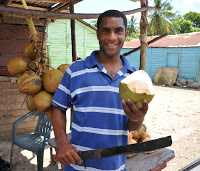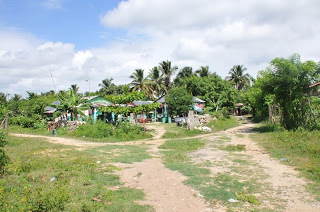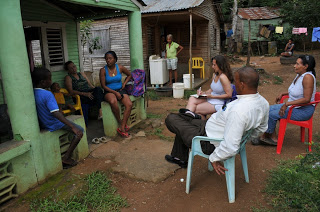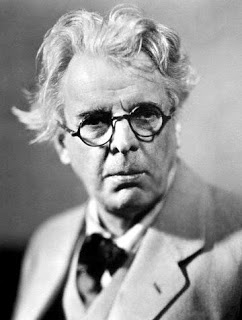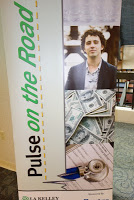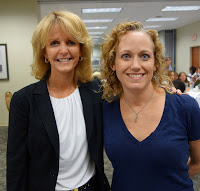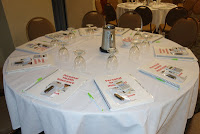Walking In Their Shoes For A Day
down our necks, back, arms, stepping gingerly through mud, grass, dirt… this
job ain’t glamorous or for the needy. Well, yes, it is for the needy; needy as
in being a child in poverty, motherless, earning a dollar a day, not having
enough to eat. These are the children with hemophilia we visited today outside
of Santo Domingo, in the Dominican Republic. It’s a day when you put your own
needs aside and realize just how shockingly removed we are from how most of the
world lives.
capital, for the past four days. I was going to blog about this amazing camp
tonight, but today readjusted our reality to the real reason we exist: to get
sponsorships for deserving children in desperate situations.
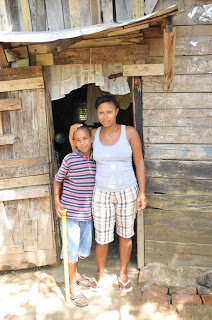
My day started with a shocking jolt at 8 am, after returning
from an hour-long run near the beach in the growing heat. From Tanzania, Dr.
James emailed me that Cuthbert, the little boy to whom I gave Tanzania’s first
home infusion, died of a GI bleed that could have been treated with factor
concentrate. We have been helping Tanzania for the past 6-7 years, and Cuthbert
was one of the first children with hemophilia I met there. His loss is
devastating.
needs still must be met. Visiting the children in their homes, we see how much
they lack, in the simple things we expect: clean water, sanitation,
transportation, nutritious food, books, imagination, education. Add to that
hemophilia and their lives are a daily struggle to survive, like Cuthbert’s.
Today we visited five families in about six hours. I’ll only mention two for
now.
Haydee’s SUV, built like a tank thankfully, to a cluster of wood shacks. The
farthest one housed the Ciriaco family. Huge plants fringed the walkways and
doors so that we had to duck sometimes. The house is made of wood slats, with
plenty of gaps in them to let sun shine in like laser beams in the morning, and
mosquitoes in at night. There are no screens, but the family does have
electricity as evidenced from the jury-rigged wires criss-crossing the shacks.
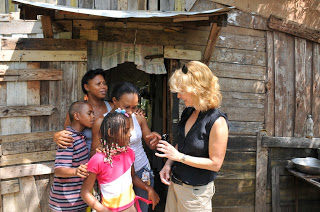
The family greeted us warmly; Luis Miguel, the son with hemophilia, sheepishly
tagged along, though he had just seen us at camp for four days! Why shy now?
His sister Nicole was not shy at all. Pretty in her beaded hair, she readily
hugged and snuggled. We all walked down to the river’s edge, where Luis
Miguel’s mother explained that the river rose in April of 2012 (11,000 impoverished
people had to relocate!) and completely flooded their meager home. They lost
most everything they had. I was told that the government came, helped for about
four days, and left. There’s no compensation, no one to sue, and certainly no
insurance. You are simply in the hands of fate.
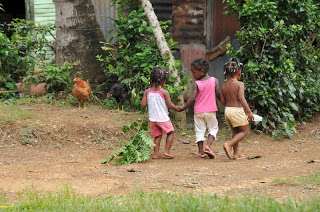 Because the family was registered with Haydee’s
Because the family was registered with Haydee’sorganization, the Fundación Apoyo al Hemofílico (FAHEM), they received food, clothing and support.
We snapped some pictures, interviewed the family a little then had to move on to the next three families.
 At the end of the day, we drove to Wilson’s house. We drove far away from the city, on decent roads, until we started seeing less businesses and homes, and more shacks, colorful laundry strung to dry, overgrown plants and lots of chickens. Rural Dominican Republic. After asking numerous people for some sketchy directions, we eventually came to the right barrios and saw Wilson waiting by the side of the road. He hopped in, exclaimed, “Hello Laureen!” (in English no less!) and then showed us how to
At the end of the day, we drove to Wilson’s house. We drove far away from the city, on decent roads, until we started seeing less businesses and homes, and more shacks, colorful laundry strung to dry, overgrown plants and lots of chickens. Rural Dominican Republic. After asking numerous people for some sketchy directions, we eventually came to the right barrios and saw Wilson waiting by the side of the road. He hopped in, exclaimed, “Hello Laureen!” (in English no less!) and then showed us how tonavigate the dirt roads to his home.

get factor into the country. Well, we accomplished our goal to visit five families today, which was exhausting, but we didn’t exactly walk in their shoes for a day. It was only for a few hours, and it left us tired and contemplative.
